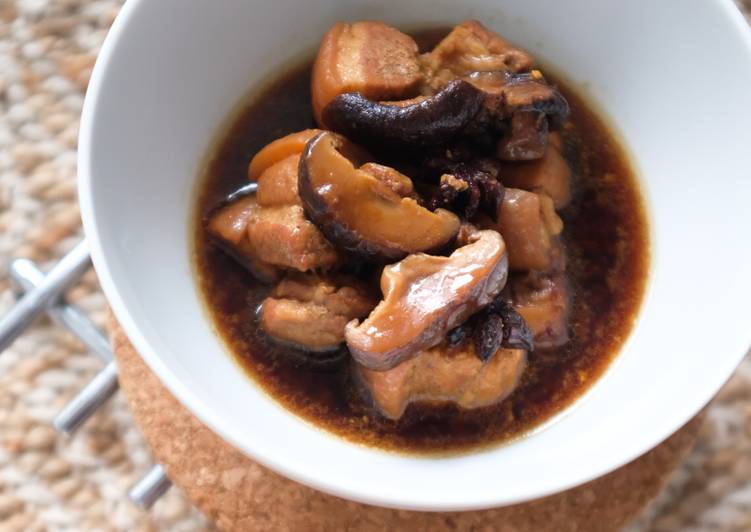Pork Belly Stew with Shitake Mushroom. Place shiitake mushroom in, add oyster sauce and light soy sauce. Return scallion sections and pork slices in. Pork Belly Stew with Shitake Mushroom Cindy C.
 What to Serve with Mushroom Pork Stew.
When I make this one-pot, quick and easy stew I serve it over rice.
You can also serve it with pasta or toasted crusty bread.
You can cook Pork Belly Stew with Shitake Mushroom using 11 ingredients and 4 steps. Here is how you achieve that.
What to Serve with Mushroom Pork Stew.
When I make this one-pot, quick and easy stew I serve it over rice.
You can also serve it with pasta or toasted crusty bread.
You can cook Pork Belly Stew with Shitake Mushroom using 11 ingredients and 4 steps. Here is how you achieve that.
Ingredients of Pork Belly Stew with Shitake Mushroom
- It's 3 of pork belly (chunked).
- Prepare 500 g of lean pork (chunked).
- It's 5 of shitake mushroom (sliced).
- You need 4 of star anise.
- You need 4 of eggs (boiled).
- It's 1 tbsp of five spice powder.
- You need of Salt.
- It's of Pepper.
- You need of Chinese cooking wine.
- It's 1 tbsp of caramel sauce.
- You need of Oil.
All of these are foods that will easily soak up any extra sauce, which is divine! Enjoy this super yummy, quick and easy pork stew recipe. If you're as into stews as I am, you. The soy-braised pork spare ribs is the well-known dish in most of Southeast Asia countries that everyone loves it.
Pork Belly Stew with Shitake Mushroom step by step
- Heat the pan, add some oil, then fry garlic and star anise until golden brown..
- Put the pork belly and lean pork in, sauteé with chinese cooking wine, wait until it's almost cooked. Then add some water..
- Season with five spices, salt, sugar, then add caramel sauce to darken..
- Add the egg, keep stiring until it's cooked and thicken..
It usually serve over steamed jasmine rice along with chili-vinegar based sauce (for adult only) and hard-boiled eggs that are often added into the stew. Slow cooker pork belly with shiitake mushrooms. Cubed pork with shiitake mushrooms cooked in a slow cooker. This mushroom-pork combined dish has a unique flavor and rich taste. Most of the oriental ingredients used for it can be found in any Chinese market.